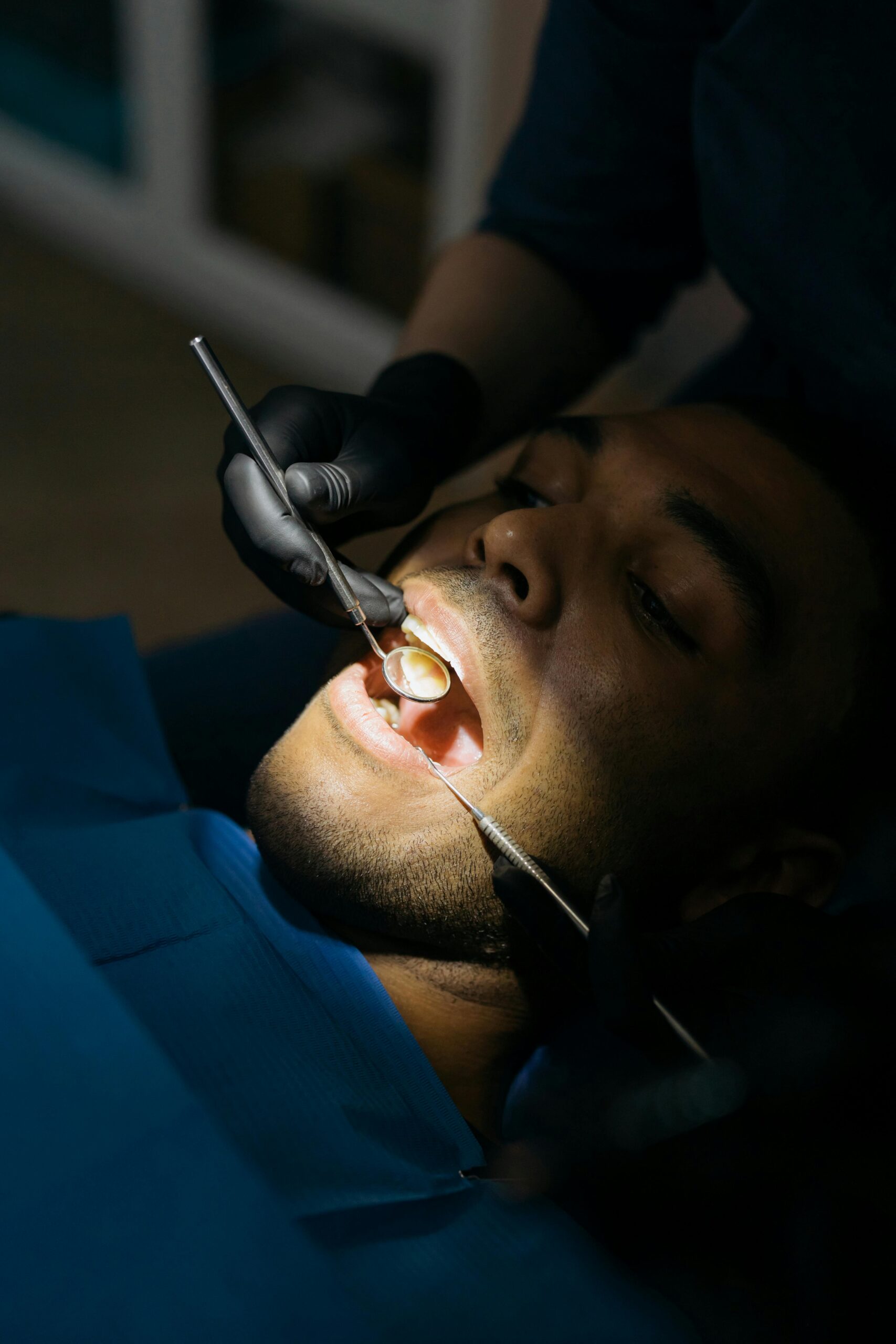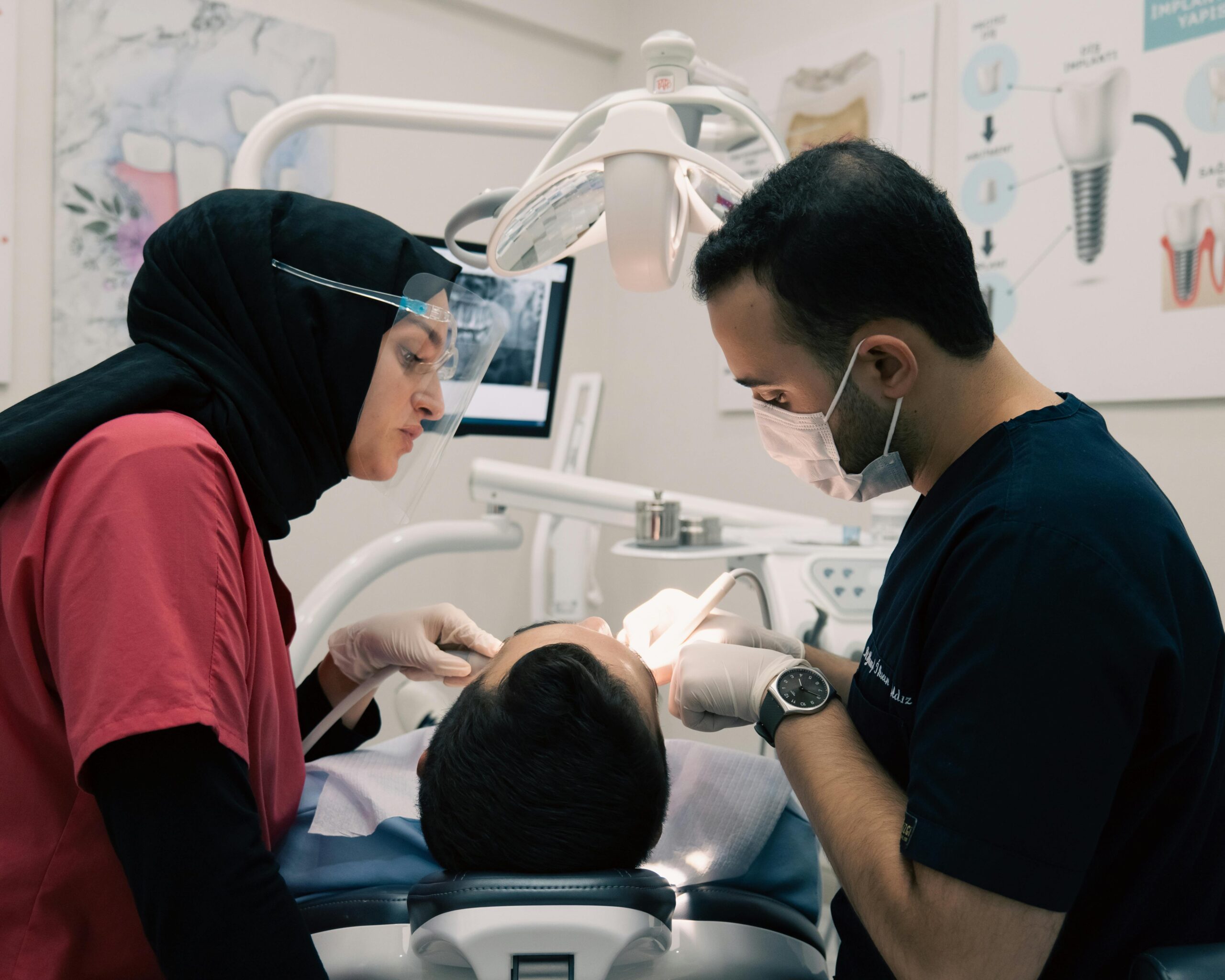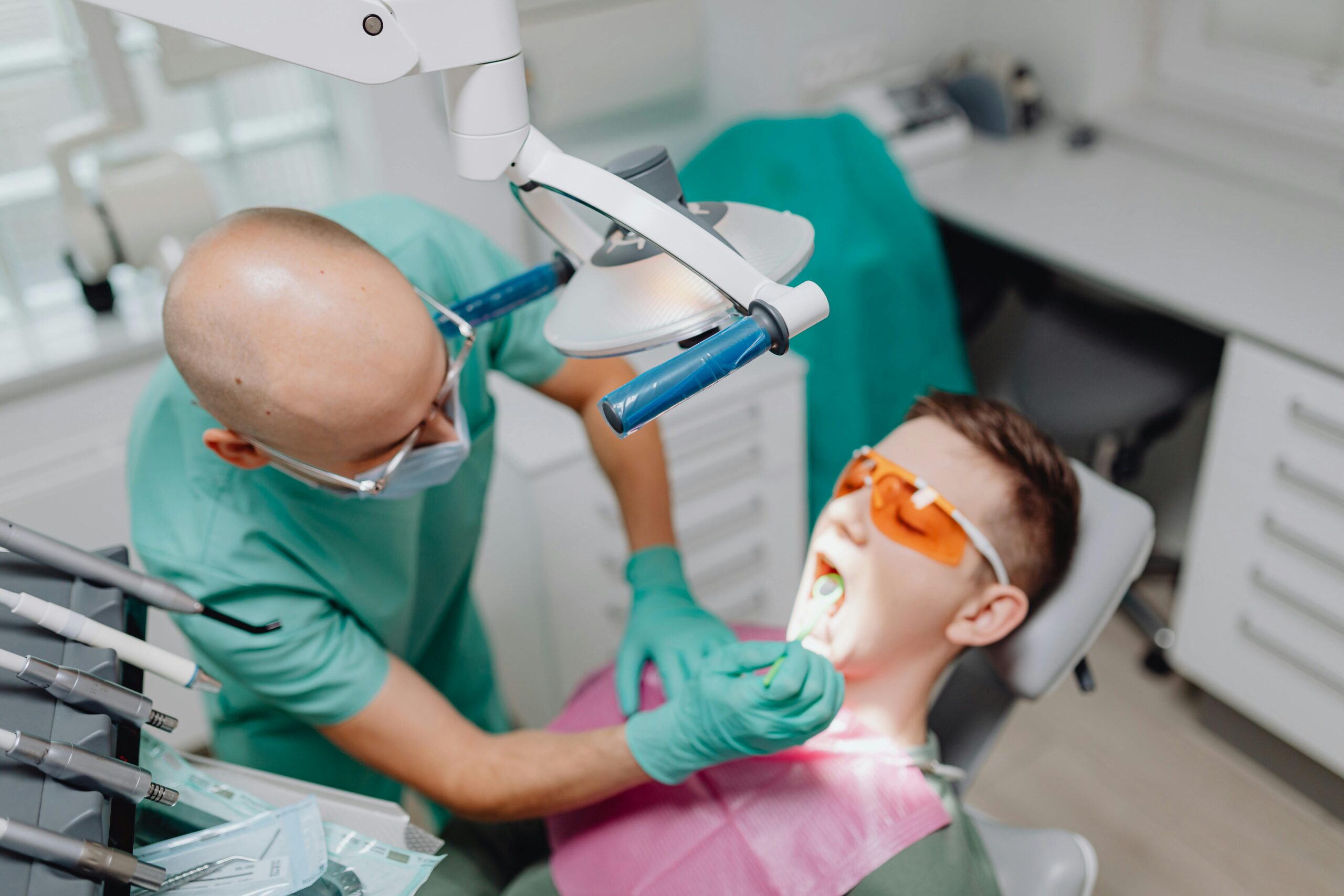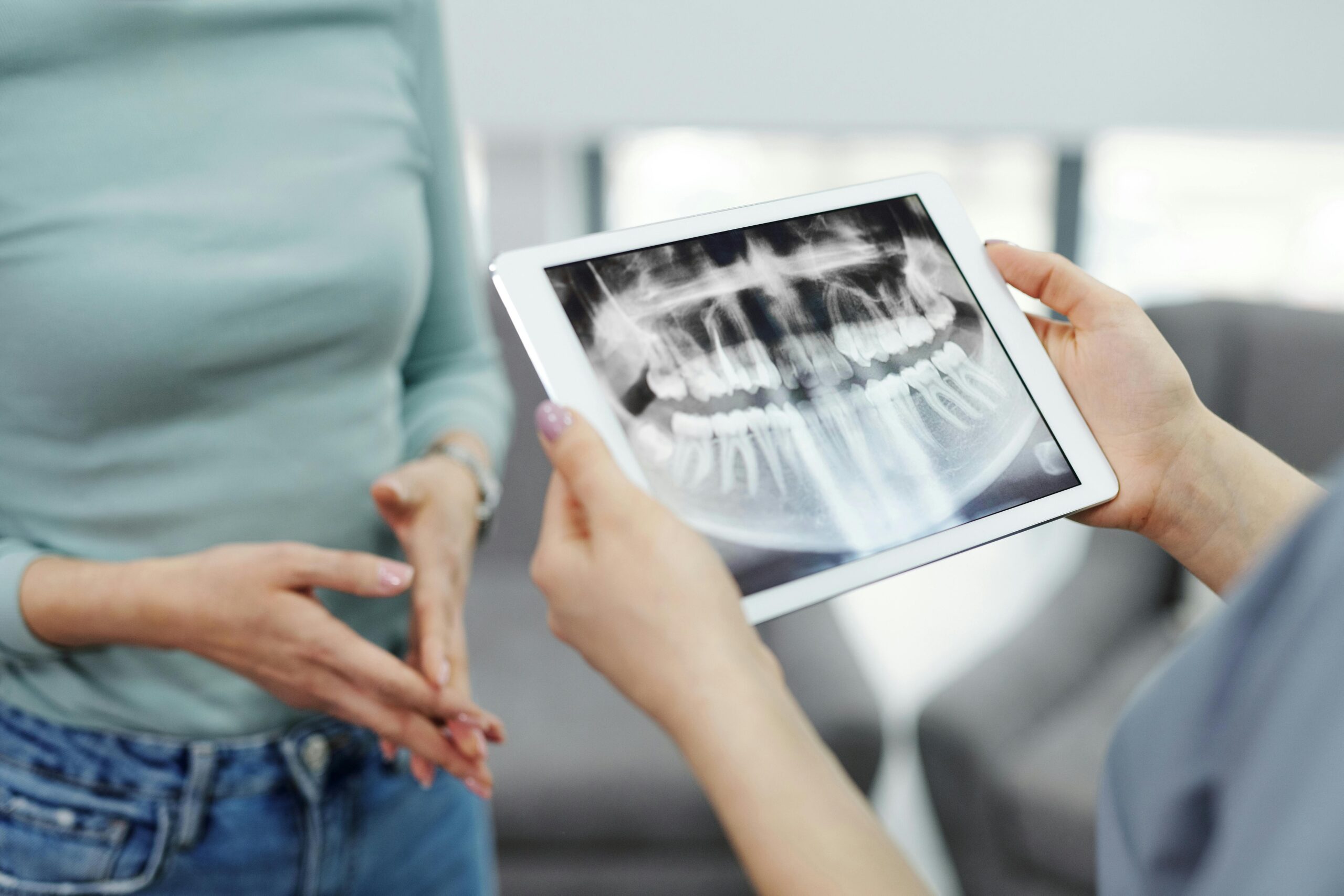What to Do Immediately
If you chip or break a front tooth, stay calm and protect the area. Pick up any broken pieces and keep them moist. Rinse your mouth gently and cover any sharp edge so it doesn’t cut your lip or tongue. A broken front tooth temporary fix is mainly about comfort and safeguarding the tooth until a dentist can evaluate it.
- Rinse your mouth gently with lukewarm water to clear blood or debris. If you find the fragment, briefly rinse it without scrubbing.
- Control bleeding by placing clean gauze or a soft cloth and pressing lightly for 10–15 minutes.
- Preserve any tooth fragment in milk or saline (or wrap in plastic with a few drops of saline). Bring it to your visit; reattachment may be possible.
- Cover a sharp edge with orthodontic wax, sugar-free gum, or temporary dental cement from a pharmacy to protect your cheeks and tongue.
- Apply a cold compress on the lip/cheek in 10-minute intervals to reduce swelling. For pain, consider over‑the‑counter relievers as directed; do not place aspirin on the gum.
- Avoid biting on the tooth. Choose soft, cool foods and avoid very hot, cold, or sugary items that can trigger sensitivity.
- If you see a pink or red spot in the center of the break (possible nerve exposure), or the tooth is very loose, avoid touching it and seek prompt care.
If the injury happens outside normal times, check our current hours and plan the soonest visit you can. Same‑day or next‑day evaluation is ideal, especially if there is lingering pain, sensitivity to air, or a visible central pink area.
Many small to moderate chips can be repaired with conservative tooth‑colored dental bonding, which restores shape and smoothness while preserving natural tooth structure.
For larger fractures or heavy wear, your dentist may recommend custom dental crowns or bridges to protect the tooth and rebuild your bite. In all cases, temporary home measures are just stopgaps—the sooner you’re examined, the better the outcome.
Safe Temporary Measures
Safe temporary measures aim to protect the tooth, reduce pain, and avoid further damage until you’re examined. A broken front tooth temporary fix focuses on covering sharp edges, keeping things clean, and avoiding biting on the area. Do not use household glues or hard materials in your mouth; they can harm the tooth and soft tissues. These steps are short‑term only.
Cover any sharp edge with orthodontic wax, sugar‑free chewing gum, or over‑the‑counter temporary dental material. Dry the tooth surface with tissue before placing it so it adheres better, and replace it if it loosens. Avoid super glue or craft adhesives, which are unsafe for oral tissues and can trap bacteria. If a fragment exists, keep it moist in milk or saline and bring it to your visit; it may help with repair.
For pain or sensitivity, use a cold compress on the lip or cheek in short intervals. Choose soft, cool foods and chew on the other side; avoid very hot, cold, or sugary items that sting. Over‑the‑counter pain relievers can help when taken as directed by the label; never place aspirin on the gum, as it can burn the tissue. If the tooth is very loose, do not wiggle or push on it—keep it protected and seek prompt care.
Keep the area clean to lower the risk of irritation. Rinse gently with warm salt water (½ teaspoon in a cup of warm water) two to three times a day. Brush the nearby teeth softly with a small amount of toothpaste, and slide floss carefully to avoid snagging the temporary covering. A tiny dab of desensitizing toothpaste on the exposed edge may lessen zings from air or cold.
These at‑home steps are meant to stabilize and soothe, not to “fix” the tooth. Many front‑tooth chips are definitively restored with conservative options such as custom porcelain veneers when appropriate for the size and location of the fracture. Deeper breaks that reach the nerve may require root canal treatment before the tooth is rebuilt. The sooner you’re evaluated, the more options you’ll have for a durable, natural‑looking result.
How to Manage Pain
Pain from a broken front tooth often comes from exposed dentin, bruised gums, or a deeper crack. To manage pain at home until you’re seen, use over‑the‑counter relievers as directed, keep the area cool, and avoid biting on the tooth. Protecting the sharp edge and keeping the mouth clean will also lower sensitivity. These steps are temporary; schedule care as soon as you can.
For medicine, acetaminophen or an NSAID (such as ibuprofen) can help when taken exactly as the label instructs. Do not place aspirin on the gum—it can burn tissue. Avoid NSAIDs if you’ve been told not to take them (for example, due to stomach ulcers, kidney disease, or certain prescriptions). Children and teens should not use aspirin. If you take blood thinners, are pregnant, or have chronic conditions, ask a pharmacist or your physician which pain reliever is safest for you.
Use a cold compress on the lip or cheek for 10 minutes on, 10 minutes off to reduce soreness. Stick to soft, cool foods and chew on the other side. Very hot, cold, or sugary foods and drinks can “zing,” so limit them. Cover any sharp edge with orthodontic wax, sugar‑free gum, or temporary dental material from a pharmacy, and replace it if it loosens. Rinse gently with warm salt water (½ teaspoon salt in a cup of warm water) two to three times a day. A tiny dab of desensitizing toothpaste on the edge can blunt sensitivity from air.
Try to rest with your head slightly elevated; this can lessen throbbing. Avoid smoking and alcohol, which can irritate tissues. A small amount of over‑the‑counter oral numbing gel on the gum (not inside the tooth) may provide brief relief; follow the label and avoid use in very young children. If pain worsens, you notice swelling, fever, or a pink/red spot in the center of the break, seek prompt care—those can signal deeper injury.
Once you’re in the chair, your dentist will control pain before repairing the tooth. If anxiety makes treatment difficult, ask about calm, doctor‑supervised oral sedation options to keep you comfortable during the visit. Remember, a broken front tooth temporary fix is about comfort and protection; the lasting solution comes from a proper exam and restoration.
Common Causes of Tooth Breakage
Front teeth most often break from a sudden hit (like a fall, sports injury, or accident), biting something hard, or because the tooth was already weakened. Decay undercuts enamel, large or aging fillings reduce support, and heavy grinding or clenching creates tiny cracks that can spread. Acid erosion from sugary or acidic drinks, or reflux, thins enamel so it chips more easily. Understanding the “why” helps your dentist plan a stable repair and prevent another break.
Trauma is the leading cause of front‑tooth fractures. A direct blow during sports without a well‑fitted mouthguard, a slip on the pool deck, or a collision can chip or fracture enamel and dentin in an instant. Even a seemingly small chip can feel sharp and look large on a front tooth because the edge is in your smile line.
Chewing forces also matter. Biting down on hard objects—ice, hard candy, unpopped popcorn kernels, bone, or unexpected pits—can snap a thin edge or finish a crack that was already there. Cold foods and drinks can make enamel slightly more brittle in the moment, which is why “crunching ice” is especially risky.
Teeth weakened from within are more likely to break. Cavities undermine enamel like a hollow under a sidewalk, so a bite or minor bump can cause a piece to cave in. Large or older fillings leave less natural tooth to absorb forces. Teeth that had root canal treatment often start with more missing structure, so they need careful protection to resist fracture over time.
Parafunction—nighttime grinding or daytime clenching—adds repeated stress. Over months or years, microscopic cracks can coalesce into a chip or corner fracture, especially on sharp front edges. Acid erosion (from sodas, energy drinks, citrus, or reflux) softens and thins enamel, making chips and wear more likely even with normal chewing.
Knowing the cause matters because a broken front tooth temporary fix at home only protects the area briefly; the lasting solution targets the damage and the reason behind it. After your exam, your dentist will suggest repairs that restore strength and help prevent a repeat, and may also discuss ways to limit future risk (for example, a custom nightguard or changes in diet or habits).
Identifying Severity of Damage
Severity depends on how deep the break goes and whether the tooth was moved or the nerve is exposed. Look for color, sensitivity, looseness, and any change in tooth position. Minor chips are usually cosmetic and less urgent; deeper fractures, mobility, or a visible pink/red spot need prompt care. A broken front tooth temporary fix can improve comfort, but these clues help you judge urgency until you’re seen.
Small enamel chips often feel rough but cause little or no pain. If the chipped area looks white and you only notice brief zings with cold air or water, it’s likely superficial. Cover the sharp edge, keep the area clean, and plan a visit soon to smooth and restore the shape.
When you see a yellow or creamy layer, dentin is exposed. Dentin exposure commonly brings lingering sensitivity to cold, sweets, or air. The edge may be sharp and irritate your lip or tongue, and the tooth can feel tender when tapped. These breaks are usually repaired soon to protect the inner tooth and restore appearance.
Urgent signs include a pink or red spot in the center of the break (possible nerve exposure), continuous bleeding from inside the tooth, or pain that throbs and wakes you up. If the tooth feels loose, looks shorter or pushed back/forward, or your bite suddenly feels “off,” the tooth may also be displaced or cracked below the gum. Swelling of the gum or lip, a cut that won’t stop bleeding, or numbness after a blow are additional reasons to seek prompt evaluation.
Check the surrounding area, too. Lip cuts may hide tiny enamel fragments, and neighboring teeth can be bruised or cracked even if they look normal at first. Save any broken piece in milk or saline and bring it with you—it can guide the repair, and sometimes it’s usable. Note any relevant history (recent dental work, nighttime grinding, or a prior root canal), as this helps your dentist choose the safest, most durable restoration. Protect the area, avoid biting on the tooth, and arrange the earliest practical exam to prevent further damage.
Tips for Proper Tooth Care
Until you’re seen, focus on keeping the area clean, protected, and calm. Brush gently, avoid biting on the tooth, and cover any sharp edge so it doesn’t irritate your lips or tongue. Choose soft, cool foods and skip extremes of temperature or sugar that can “sting.” These steps support a broken front tooth temporary fix by reducing irritation and preventing extra damage.
Clean the area with a soft toothbrush and a small amount of fluoride toothpaste, using light strokes so you don’t snag the edge. Floss carefully by sliding the floss out to the side rather than snapping it up, which could dislodge a temporary covering. Rinse gently with warm salt water (½ teaspoon in a cup of warm water) two to three times a day to soothe tissues and help keep debris away from the fracture.
If an edge feels sharp, place orthodontic wax, sugar‑free gum, or over‑the‑counter temporary dental material on the spot; dry the tooth with tissue first so it sticks better. A tiny dab of desensitizing toothpaste on the exposed edge can lessen sensitivity to air or cold. Do not use super glue or household adhesives—these can burn tissues, trap bacteria, and complicate proper repair. If you have the broken piece, keep it moist in milk or saline and bring it to your visit.
Chew on the opposite side and pick soft, non‑crunchy foods like yogurt, eggs, mashed vegetables, and pasta. Avoid very hot, very cold, or sugary foods and drinks that can trigger zings. Skip alcohol and smoking, which can irritate tissues and slow healing. Avoid whitening strips or bleaching gels until the tooth is evaluated, as they can increase sensitivity.
Limit activities that could jar the tooth, like contact sports; if participation is unavoidable, wear a mouthguard and avoid using the injured tooth. Try not to clench or grind—rest your jaw, keep your lips slightly apart, and consider a warm washcloth on the jaw muscles for comfort. Watch for worsening pain, swelling, fever, a pink/red spot in the center of the break, or looseness; those signs need prompt evaluation. Protect the area, keep things clean, and arrange the earliest practical exam so a lasting repair can be planned.
When to See a Dentist Promptly
Seek prompt dental care if the tooth is very painful, loose or moved, or you see a pink/red spot in the center of the break (possible nerve exposure). Go urgently for swelling, fever, a cut that won’t stop bleeding, or if the tooth was knocked out or pushed in or out of position. Small, painless chips can usually wait a short time, but same‑day or next‑day evaluation is best to prevent further damage. A broken front tooth temporary fix can protect the area briefly, but it is not a substitute for timely care.
Lingering pain to cold, sweets, or air, or pain that throbs or wakes you up, signals deeper injury and should be checked soon. If your bite suddenly feels “off,” the tooth feels loose, or it looks shorter or shifted, the tooth may be displaced or cracked below the gum and needs urgent attention. Continuous bleeding from inside the tooth, or seeing pink/red tissue at the fracture, suggests the nerve is exposed and should be treated quickly to protect the tooth.
Facial or gum swelling, a pimple on the gum, bad taste or drainage, or fever can point to infection; these symptoms warrant prompt evaluation. If an adult front tooth is completely knocked out, seek immediate care; keep the tooth moist in milk or saline and avoid touching the root. For a deep break with a large missing piece, bring any fragment you find; keeping it moist may help with repair. Avoid chewing on the tooth and keep the area clean and protected until you’re seen.
After a blow to the mouth, get urgent medical care for any head or neck injury, loss of consciousness, or uncontrolled bleeding, and arrange dental follow‑up as soon as possible. Children with tooth injuries also need timely assessment, especially if a tooth is loose, intruded (pushed up), or very sensitive, because growing teeth and roots are more vulnerable. If braces or a wire are involved, avoid manipulating them and seek care promptly to prevent soft‑tissue injury. The sooner your tooth is evaluated, the more options you’ll have for a durable, natural‑looking repair and to prevent complications.
Avoiding Common Mistakes
When a front tooth breaks, the biggest risks come from well‑meant but harmful “fixes.” Avoid chemicals, rough tools, and anything that adds force to the tooth. A broken front tooth temporary fix should protect and calm the area—not complicate the final repair.
Do not use super glue, craft adhesives, or nail products in your mouth. These chemicals can burn tissues, trap bacteria, and interfere with proper bonding later. Skip filing or sanding sharp edges; you can remove healthy enamel or open a deeper crack. If a small piece is hanging, don’t twist or snap it off—cover it and let your dentist assess it.
If you find a fragment, do not scrub it or let it dry out. Briefly rinse it and keep it moist in milk or saline until your visit. Avoid taping or cementing the fragment back yourself; a misaligned piece can damage the bite and gums.
Don’t “test” the tooth by biting, tapping, or wiggling it. Chew on the other side and avoid hard, crunchy, or sticky foods that can lever the fracture open. Very hot, very cold, or sugary items can spike sensitivity and encourage more cracking, so keep foods soft and cool until you’re seen. Never use your teeth to open packages or bottles.
Avoid placing aspirin on the gum—it can cause a chemical burn. Be cautious with clove oil or strong oral gels; never pack liquids into the fracture, and use small amounts on the gum only, following the label. Over‑the‑counter temporary dental materials can cover a sharp edge, but do not push material deep into a hole or near pink/red tissue. If the tooth looks pink in the center or feels loose, protect it and seek prompt care rather than attempting any patch.
Don’t stop cleaning the area. Gently brush nearby teeth and rinse lightly with warm salt water; forceful rinsing can dislodge fragile edges. Slide floss out to the side so you don’t lift a temporary covering. Finally, don’t delay an exam—waiting can increase pain, staining, or the chance of a deeper crack. Early evaluation leads to simpler, longer‑lasting repairs.
Understanding Dental Emergencies
A dental emergency is a problem that risks permanent damage, infection spread, or loss of a tooth if it is not treated quickly. With a front‑tooth break, urgency depends on depth of the fracture, pain, bleeding, and whether the tooth moved. Quick evaluation helps save tooth structure, control pain, and prevent complications. If you’re unsure, treat it as urgent and arrange the earliest practical exam.
Situations that need prompt care include a visible pink or red spot in the center of the break (possible nerve exposure), continuous bleeding from the tooth, or pain that throbs and lingers after cold or sweets. A tooth that feels loose, looks shorter or pushed forward/back, or makes your bite feel “off” can be displaced or cracked under the gum and should be checked quickly. Swelling of the lip or gum, a pimple on the gum with bad taste, fever, or difficulty swallowing suggest infection and warrant urgent attention. After a heavy blow, seek medical care first for any head or neck injury, then arrange dental follow‑up.
Concerns that usually allow a short wait include a small chip with no deep pain, no tooth movement, and only brief zings to cold air or water. Even then, plan a visit soon so the edge can be smoothed and the tooth protected. A broken front tooth temporary fix at home should focus on comfort and protection only—covering sharp edges, keeping the area clean, and avoiding biting on the tooth—until a dentist can examine it.
Time matters because cracked enamel can propagate with chewing, and exposed dentin can pick up stain, sensitivity, and bacteria. If you found a fragment, keeping it moist (milk or saline) may help with planning or repair. Children and teens need timely assessment because developing teeth and roots are more vulnerable to displacement and nerve injury. Adults with medical conditions (such as immune compromise or blood thinners) should also seek earlier evaluation to reduce risk.
When in doubt, choose caution: protect the area, avoid testing the tooth, and keep it clean and calm. Early care tends to mean simpler, more durable repairs and fewer surprises later.
Preventive Measures for Front Teeth
Most front‑tooth chips can be avoided with a few steady habits. Protect teeth during sports, limit risky chewing, and keep enamel strong so it resists everyday bumps. Managing bite forces and fixing small problems early also lowers the chance of a bigger break. These steps help you avoid emergencies and keep any repair looking good longer.
Wear a well‑fitted mouthguard for contact sports, skating, biking, or activities with falls or elbows. Always use seat belts and chin straps; sudden stops can throw teeth together. Avoid chewing ice, pens, hard candy, or unpopped popcorn kernels, and watch for hidden pits in olives or fruit. Don’t use your teeth to open packages or hold objects—those sudden twists are a common cause of front‑tooth cracks.
If you clench or grind, especially at night, talk with your dentist about a custom nightguard. It spreads pressure and cushions edges, reducing chips and corner fractures on front teeth. During the day, keep your lips together and teeth slightly apart; resting the jaw this way lessens accidental bites on hard foods.
Keep enamel healthy. Brush twice daily with fluoride toothpaste and floss gently to control plaque at the edges. Limit acids from sodas, energy drinks, citrus, and vinegar; sip water with them and wait about 30 minutes before brushing so softened enamel can reharden. Address small cavities, worn fillings, or rough edges early—tiny defects act like notches and can propagate into larger breaks. Regular exams let your dentist smooth sharp spots and reinforce weak areas before they fail.
Bite alignment matters, too. An edge‑to‑edge bite or increased overjet puts front teeth in the line of fire during chewing or a fall. When appropriate, orthodontic care with clear aligners can move teeth into a safer position and reduce trauma risk; learn more about modern, low‑profile options with our Invisalign approach to correcting overjet and alignment. While a broken front tooth temporary fix can help in a pinch, a prevention plan—mouthguard use, strong enamel, balanced bite, and timely checkups—offers the best long‑term protection.
Frequently Asked Questions
Here are quick answers to common questions people have about Broken Front Tooth: Temporary Fixes Until You’re Seen in Glendale, AZ.
- What immediate steps should I take if I break a front tooth?
If you break a front tooth, stay calm and rinse your mouth gently with lukewarm water. Gather any tooth fragments and keep them moist in milk or saline. Apply clean gauze to control bleeding. Cover any sharp edges with orthodontic wax or temporary dental cement to protect soft tissues. If the tooth is loose or a pink/red spot is visible, avoid touching it and arrange prompt dental care. These steps are key to a temporary fix until you’re evaluated.
- How can I manage pain at home from a broken front tooth?
Manage pain by taking acetaminophen or ibuprofen as directed and using a cold compress on your cheek. Cover sharp edges of the tooth with orthodontic wax, and avoid biting down on the tooth. Stick to soft, cool foods and avoid extremely hot, cold, or sugary items to reduce sensitivity. If the pain worsens or swelling occurs, seek dental care quickly.
- What should I not do when attempting a temporary fix for a broken front tooth?
Avoid using household glues, as they can harm tissue and create complications. Do not sand or file sharp edges, as it may worsen the damage. Refrain from wiggling or biting on the tooth, and avoid eating hard or sticky foods. Ensure not to scrub found fragments; instead, keep them moist in milk or saline.
- When is it necessary to see a dentist urgently for a broken front tooth?
See a dentist urgently if the tooth is very loose, you notice a red or pink spot in the break (possible nerve exposure), or if there is persistent pain, swelling, or bleeding. A dislodged tooth or signs of infection like fever or swelling also require prompt attention. While a temporary fix provides protection, these situations need immediate professional care.
- What are some preventive measures to avoid breaking a front tooth?
Prevent tooth breaks by wearing a well-fitted mouthguard during sports, avoiding hard foods like ice and hard candy, and not using your teeth to open packages. Maintain strong enamel by brushing with fluoride toothpaste, limiting acidic foods, and addressing small dental issues early. If tooth grinding is a problem, discuss nightguard options with your dentist.




